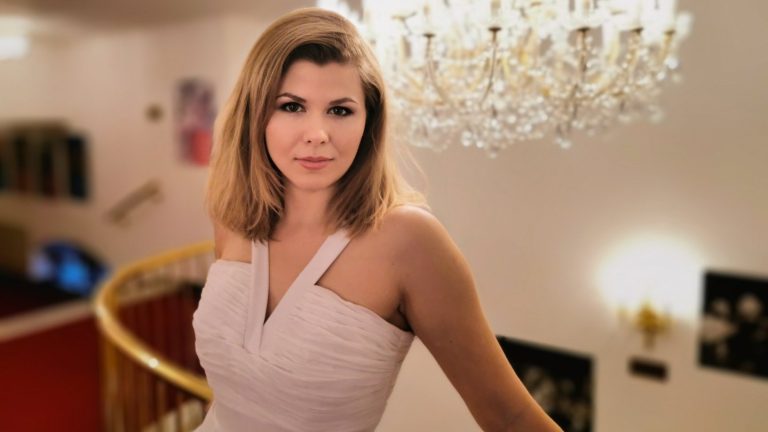A concert version of the famous bel canto masterpiece will be performed on 11 March by the State Opera Chorus and Orchestra, conducted by Andriy Yurkevych, the music director of the State Opera. The title role will be sung by Lucie Kaňková.
The special Italian bel canto evening at the State Opera will feature a concert version of Gaetano Donizetti’s Lucia di Lammermoor. “Lucia di Lammermoor is one of the most celebrated bel canto operas of all time,” says Andriy Yurkevych, the music director of the State Opera, adding that this type of repertoire enchanted while working in Italy: “Donizetti, Bellini and Rossini were a revelation to me. I presently fell in love with their universe of musical images, ideas and voices.”
The opera has had an interesting performance history in Prague, where it has been highly popular among music lovers. Lucia di Lammermoor received its opening night at the Estates Theatre in 1838, a mere three years after its world premiere, with Kateřina Podhorská Kometová in the lead role. In 1864, the opera was first staged at the Provisional Theatre, where it was conducted, among others, by Bedřich Smetana. In April 1900 the Neues deutsches Theater hosted the legendary lyric soprano Nelie Melba, one of the most renowned performers of Donizetti’s heroine, who around 1880 had begun singing at the end of the slow section of the “mad scene” an extensive cadenza, coming across as a battle between the flute and the soprano over which of them can get “higher and more virtuoso”.
Set to a libretto loosely based on Sir Walter Scott’s novel The Bride of Lammermoor, the opera depicts the ill-fated love between Lucia and Edgardo, whose marriage is prevented by Enrico, Lucia’s brother. Besides a number of misunderstandings and misfortunes, it contains a murder and a suicide, but the audience can also savour moments of profound affection and tenderness, with the score teeming with wonderful melodies and virtuoso arias. The opera boasts the famed “mad scene”, a technically and expressively challenging number that has become a touchstone for many distinguished coloratura sopranos.
“I for my part regard the drama as the victory of the music of hearts, dreaming an illustrious future and vowing to be true to each other, which is implied in the duet of Lucia and Edgardo in Act One. I deem the most forcible episode in this opera to be the silent scream of Lucia’s soul, which precedes the famous sextet and which precludes a massacre. Female beauty, sincere love, clemency and sense of duty have always had the power do avert bloodshed or fratricide – and I firmly believe it is also the case in the 21st century,” Yurkevych points out.
The title role has been assigned to Lucie Kaňková. The conductor explains his choice: “Lucie is a gifted young Czech singer, whose voice and acting skills I had the opportunity to get to know before coming to Prague. Her performance craft and musicality are impressive indeed. What’s more, her voice sounds very ‘Italian’. The Italian tenor Matteo Desole, who has been cast in the role of Edgardo, matches Lucie in respect of youth and voice. The colour of his voice is warm and his musicality is top-notch. Enrico will be performed by Pavol Kubáň, a young yet experienced baritone, who will make his debut in the part. His vocal expression splendidly suits this operatic style.”
As regards the other roles, Daniel Matoušek will appear as Arturo, Iurie Maimescu as Raimondo, Lucie Hilscherová as Alisa and Ivan Kusnjer as Normanno.
Lucie Kaňková, who has regularly performed in Prague, primarily portraying the Queen of the Night, Violetta Valéry and Gilda, says about her new artistic task: “Singing the role throughout is like painting a picture. The brush-strokes are never rigorous and regular, and when it comes to bel canto, which applies to the part of Lucia di Lammermoor too, one must never cease to be creative. Each phrase has a new idea, a new mood, a different tempo. Lucia’s personality is expansive. In the final part of the opera, she goes totally mad and immerses herself in her wild visions, yet her mental instability is discernible from the very beginning. I am always astonished at the variety of aspects that can be found in the role, with emotions reflecting in rapid runs and sublime melodies alike. The mad scene in Act Three is deservedly the best-known scene of insanity in opera there is, with reality vanished altogether and Lucia diving into her inner world. I consider it a new dimension of interpretation, in which I don’t see any limits.”











